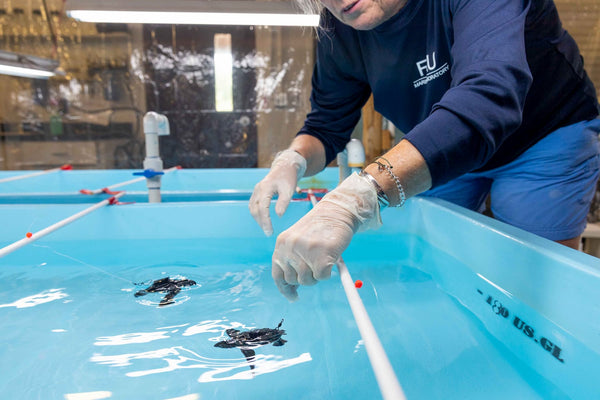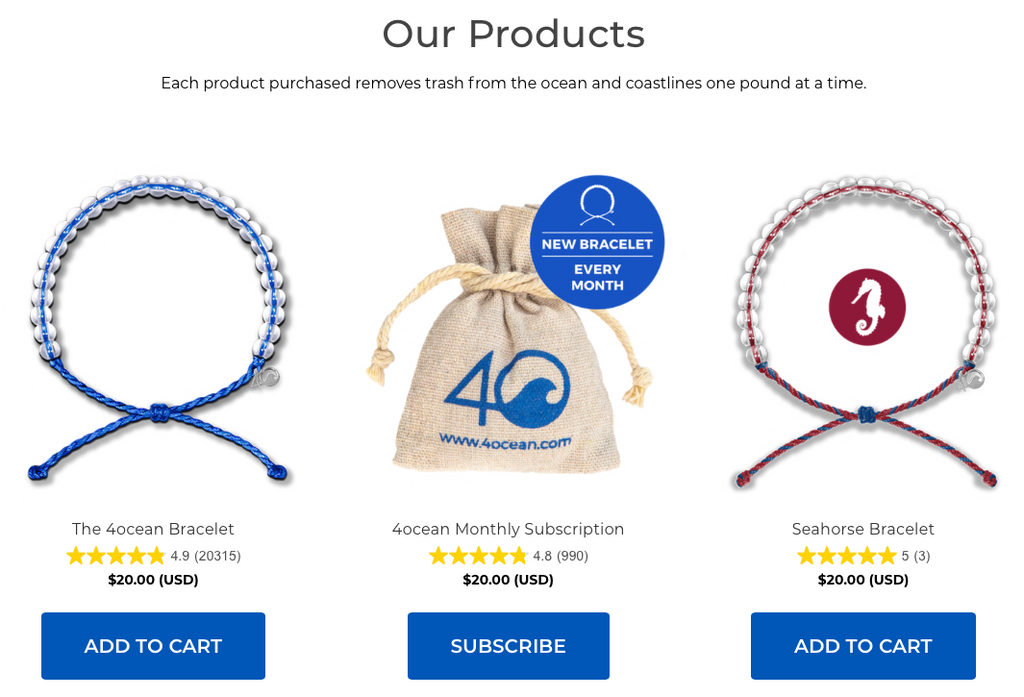Every year on World Sea Turtle Day, June 16th, people around the world pay their respects and show their admiration for some of the most beloved animals in the ocean –– sea turtles. And of the seven sea turtles species, the leatherback sea turtle is the grandest of them all.
They truly are the leviathans of the deep, weighing up to 1,500 lbs (680 kg) and diving to depths of 4,200 ft (1280 m) all while holding their breath for a whopping 85 minutes!

But these are the adults. What happens from the time leatherbacks are hatchlings to the time they become these pelagic mammoths? That is exactly what our partner, Florida Atlantic University® Marine Research Lab, is trying to find out. They are one of the only institutions in the world that have been successful at raising leatherback hatchlings in the lab to help get a better understanding of their true lifecycle and the behavior of the species in the wild.
First, they go through a super-strict permitting process with the US Federal Government and the State of Florida to secure permission to obtain a select few hatchlings from the nests of wild leatherbacks that nest on our beaches. Once a candidate nest has been identified, they place a telemetry device in the bottom to record scientific data throughout the time eggs are developing. This device measures things like temperature and moisture so scientists can use this data to make predictions about future nests.
 Photo: FAU Research Lab collecting leatherback eggs for study
Photo: FAU Research Lab collecting leatherback eggs for study
 Photo: FAU Research Lab setting telemetry device in leatherback nest for scientific study
Photo: FAU Research Lab setting telemetry device in leatherback nest for scientific study
Once the leatherbacks hatch, they take those select few hatchlings back to the lab where they are fitted with a specially designed harness that attaches to the back of their shell. This is then attached to a pole above the tank so they can mimic the baby turtles' continuous swimming motion in the open ocean. These animals don't recognize boundaries like the edges of a tank so it is very important to keep them swimming in a relatively normal way the entire time they are in the lab.
We were lucky enough to be there the day the first batch of hatchlings was brought to the lab. Check out this video we took of these hours old hatchlings.
 Photo: Dr. Jeanette Wyneken Attaching a harness to a leatherback hatchling at FAU Marine Research Lab
Photo: Dr. Jeanette Wyneken Attaching a harness to a leatherback hatchling at FAU Marine Research Lab
 Photo: A leatherback hatchling gets its new, temporary home.
Photo: A leatherback hatchling gets its new, temporary home.
 Photo: Closeup of leatherback hatchling harness system.
Photo: Closeup of leatherback hatchling harness system.
Once they adapt to their new surroundings after a day or so, the process of getting them feeding begins. Since leatherbacks predominately feed on jellyfish and other similar organisms, they require a special mix of ingredients in their food to help them grow and stay healthy. The FAU Marine Research Lab is continually perfecting this nourishing formula and has had great success in developing the proper diet for these little guys. With each animal, they learn a little bit more and have become experts on how to raise them to a size where they're ready to be released.
The next step in the process is many months away, but once they've reached release, they're fitted with a tiny GPS tracking device and released. The GPS is affixed to their shell in the most non-invasive way possible and won't affect their natural behavior in any way. This is important because the GPS device doesn't just track their location. It can also take measurements like dive depth and temperature on the wide-ranging travels these turtles will take in the first few months and years of their lives.
Finding out where these turtles go during their lifecycle is extremely important to their conservation. We need to know if they are going to areas that are dangerous to them including places with high concentrations of ocean plastic or other pollutants, high-density shipping lanes, or where oil exploration is happening. If we know where they are going, we can create and implement better protective policies in these areas and reduce the stressors that are causing population declines.
As we follow the next stage in this process and get more information from the FAU Marine Research Lab, we'll make sure to share it with you so you can follow these baby turtles along their incredibly long journeys.
Make sure to grab your 4ocean Leatherback Bracelet and pull a pound of trash from the ocean and coastlines. These animals thank you in advance!


 Photo: FAU Research Lab collecting leatherback eggs for study
Photo: FAU Research Lab collecting leatherback eggs for study
 Photo: FAU Research Lab setting telemetry device in leatherback nest for scientific study
Photo: FAU Research Lab setting telemetry device in leatherback nest for scientific study
 Photo: Dr. Jeanette Wyneken Attaching a harness to a leatherback hatchling at FAU Marine Research Lab
Photo: Dr. Jeanette Wyneken Attaching a harness to a leatherback hatchling at FAU Marine Research Lab
 Photo: A leatherback hatchling gets its new, temporary home.
Photo: A leatherback hatchling gets its new, temporary home.
 Photo: Closeup of leatherback hatchling harness system.
Photo: Closeup of leatherback hatchling harness system.
